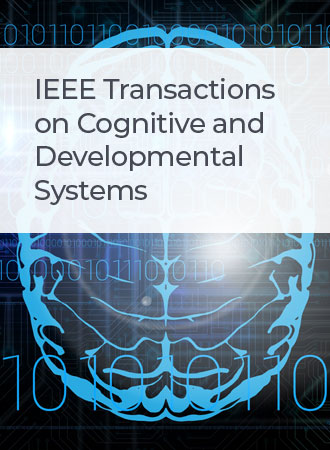The Distinction Between Object Recognition and Object Identification in Brain Connectivity for Brain–Computer Interface Applications
IF 4.9
3区 计算机科学
Q1 COMPUTER SCIENCE, ARTIFICIAL INTELLIGENCE
IEEE Transactions on Cognitive and Developmental Systems
Pub Date : 2024-06-24
DOI:10.1109/TCDS.2024.3417299
引用次数: 0
Abstract
Object recognition and object identification are complex cognitive processes where information is integrated and processed by an extensive network of brain areas. However, although object recognition and object identification are similar, they are considered separate functions in the brain. Interestingly, the difference between object recognition and object identification has still not been characterized in a way that brain–computer interface (BCI) applications can detect or use. Hence, in this study, we investigated neural features during object recognition and identification tasks through functional brain connectivity. We conducted an experiment involving 25 participants to explore these neural features. Participants completed two tasks: an object recognition task, where they determined whether a target object belonged to a specified category, and an object identification task, where they identified the target object among four displayed images. Our aim was to discover reliable features that could distinguish between object recognition and identification. The results demonstrate a significant difference between object recognition and identification in the participation coefficient (PC) and clustering coefficient (CC) of delta activity in the visual and temporal regions of the brain. Further analysis at the category level shows that this coefficient differs for different categories of objects. Utilizing these discovered features for binary classification, the accuracy for the animal category reached 80.28%. The accuracy for flower and vehicle categories also improved when combining the PC and CC, although no improvement was observed for the food category. Overall, what we have found is a feature that might be able to be used to differentiate between object recognition and identification within a BCI object recognition system. Further, it may help BCI object recognition systems to determine a user’s intentions when selecting an object.脑连接中物体识别与物体识别的区别,用于脑机接口应用
物体识别和物体识别是复杂的认知过程,其中信息是由广泛的大脑区域网络整合和处理的。然而,尽管物体识别和物体识别是相似的,但它们被认为是大脑中不同的功能。有趣的是,物体识别和物体识别之间的区别还没有被描述成脑机接口(BCI)应用程序可以检测或使用的方式。因此,在本研究中,我们通过功能性脑连接研究了物体识别和识别任务中的神经特征。我们进行了一项涉及25名参与者的实验来探索这些神经特征。参与者完成了两项任务:一项是物体识别任务,即确定目标物体是否属于特定类别;另一项是物体识别任务,即在四幅显示的图像中识别目标物体。我们的目标是发现可以区分物体识别和识别的可靠特征。结果表明,目标识别与识别在视觉区和颞区δ活动的参与系数(PC)和聚类系数(CC)上存在显著差异。在类别层面的进一步分析表明,这个系数对于不同类别的对象是不同的。利用这些发现的特征进行二值分类,动物分类的准确率达到80.28%。当结合PC和CC时,花和车辆类别的准确性也有所提高,尽管食物类别没有改善。总的来说,我们发现的是一个可以用来区分BCI对象识别系统中的对象识别和识别的特征。此外,它可以帮助BCI对象识别系统在选择对象时确定用户的意图。
本文章由计算机程序翻译,如有差异,请以英文原文为准。
求助全文
约1分钟内获得全文
求助全文
来源期刊

IEEE Transactions on Cognitive and Developmental Systems
Computer Science-Software
CiteScore
7.20
自引率
10.00%
发文量
170
期刊介绍:
The IEEE Transactions on Cognitive and Developmental Systems (TCDS) focuses on advances in the study of development and cognition in natural (humans, animals) and artificial (robots, agents) systems. It welcomes contributions from multiple related disciplines including cognitive systems, cognitive robotics, developmental and epigenetic robotics, autonomous and evolutionary robotics, social structures, multi-agent and artificial life systems, computational neuroscience, and developmental psychology. Articles on theoretical, computational, application-oriented, and experimental studies as well as reviews in these areas are considered.
 求助内容:
求助内容: 应助结果提醒方式:
应助结果提醒方式:


